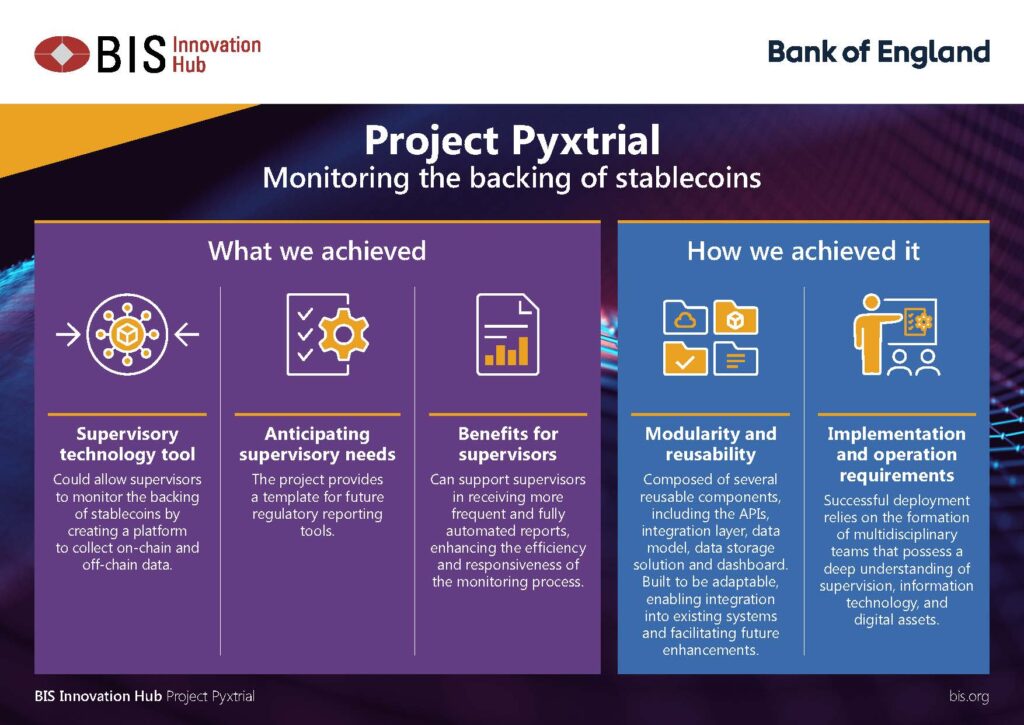The Bank for International Settlements has announced a joint project with the Bank of England aimed at tracking stablecoins’ reserves.
The Bank for International Settlements Innovation Hub, in collaboration with the Bank of England, announced a new joint pilot aimed at supervising assets that back stablecoins. In a July 31 announcement, the BIS said that the so-called “Project Pyxtrial” is focused on leveraging technology to provide supervisors with “near real-time data about stablecoins’ liabilities and their backing assets.”
While the technical details of the project are slim, the BIS says the project boasts features such as data collection, storage, and analysis to address potential risks more swiftly.
It is understood that the project also supports APIs, thereby making it possible for different parties to connect to it. The BIS pointed out that the project has already demonstrated that “the balance sheets of asset-backed stablecoins can be supervised,” but admitted that successful deployment requires that regulators use a “multidisciplinary team to implement and operate it.”

According to the BIS, Project Pyxtrial has the potential to extend beyond stablecoins, allowing monitoring of other tokenized products backed by real-world assets to help regulators in “proactively detecting issues in stablecoin backing and aiding the development of policy frameworks based on integrated data.”
The scrutiny of stablecoin reserves has been a persistent issue within the crypto industry. Europe’s regulatory framework for digital assets, the Market in Crypto-Assets — also known as MiCA — was anticipated to clarify these concerns by imposing stringent transparency, compliance, and reserve requirements on issuers before offering stablecoins to consumers in the European Union.
However, not all industry stakeholders seem to be satisfied. Tether (USDT) chief executive Paolo Ardoino warned in a recent interview that MiCA regulations on stablecoins, due to excessive cash reserve requirements, could pose systemic risks to banks.










